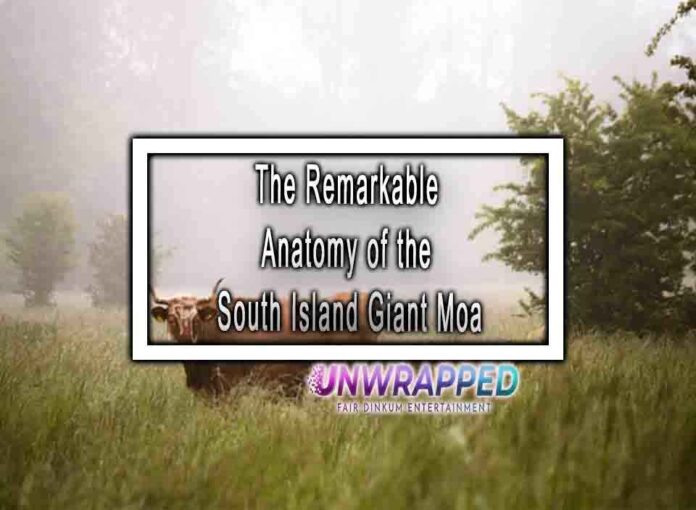The South Island giant moa (Dinornis robustus) was a remarkable, extinct species of flightless bird that once inhabited New Zealand. Here’s an overview of its remarkable anatomy:
1. Taxonomy and Classification:
- Genus and Species: The South Island giant moa belonged to the genus Dinornis and the species robustus.

- Flightless Ratites: Moas were part of a group of flightless birds known as ratites, which includes ostriches, emus, and kiwis.
2. Size and Morphology:
- Impressive Size: The South Island giant moa was one of the largest moa species, reaching towering heights of around 10 feet (3 meters) or more.
- Robust Build: As suggested by its species name, robustus, it had a robust and sturdy build, adapted for a terrestrial lifestyle.
3. Feathers and Plumage:
- Feathered Appearance: Like other moas, the South Island giant moa was covered in feathers, providing insulation and protection.
- Plumage Color: The color of the plumage is not well-known due to the lack of preserved pigments in the fossils.
4. Head and Beak:
- Small Head: Moas had relatively small heads in proportion to their large bodies.
- Beak Shape: The beak of the South Island giant moa was curved and pointed, adapted for grasping and tearing vegetation.
5. Limbs and Feet:
- Long Legs: Moas had long, powerful legs, indicative of their terrestrial lifestyle.
- Three Toes: The South Island giant moa, like other moas, had three toes on each foot. This distinctive feature contributed to the footprint patterns found in fossilized tracks.
6. Diet and Feeding Behavior:
- Herbivorous Diet: Moas were herbivores, primarily feeding on vegetation such as leaves, twigs, and shrubs.
- Grazing Behavior: Their beaks were adapted for grazing, and they likely played a crucial role in shaping the vegetation of their ecosystem.
7. Behavior and Social Structure:
- Social Dynamics: Moas are believed to have exhibited social behavior, possibly living in groups or flocks.
- Territoriality: Some evidence suggests that moas were territorial, with distinct breeding territories.
8. Extinction:
- Human Impact: The South Island giant moa, like other moa species, became extinct shortly after the arrival of Polynesians in New Zealand, around the 13th century.
- Overhunting and Habitat Change: Overhunting by humans, habitat destruction, and introduced predators contributed to their rapid decline and extinction.
The South Island giant moa, with its impressive size and unique adaptations, is a fascinating subject of study in paleontology, providing valuable insights into the prehistoric fauna of New Zealand and the impact of human colonization on island ecosystems.











